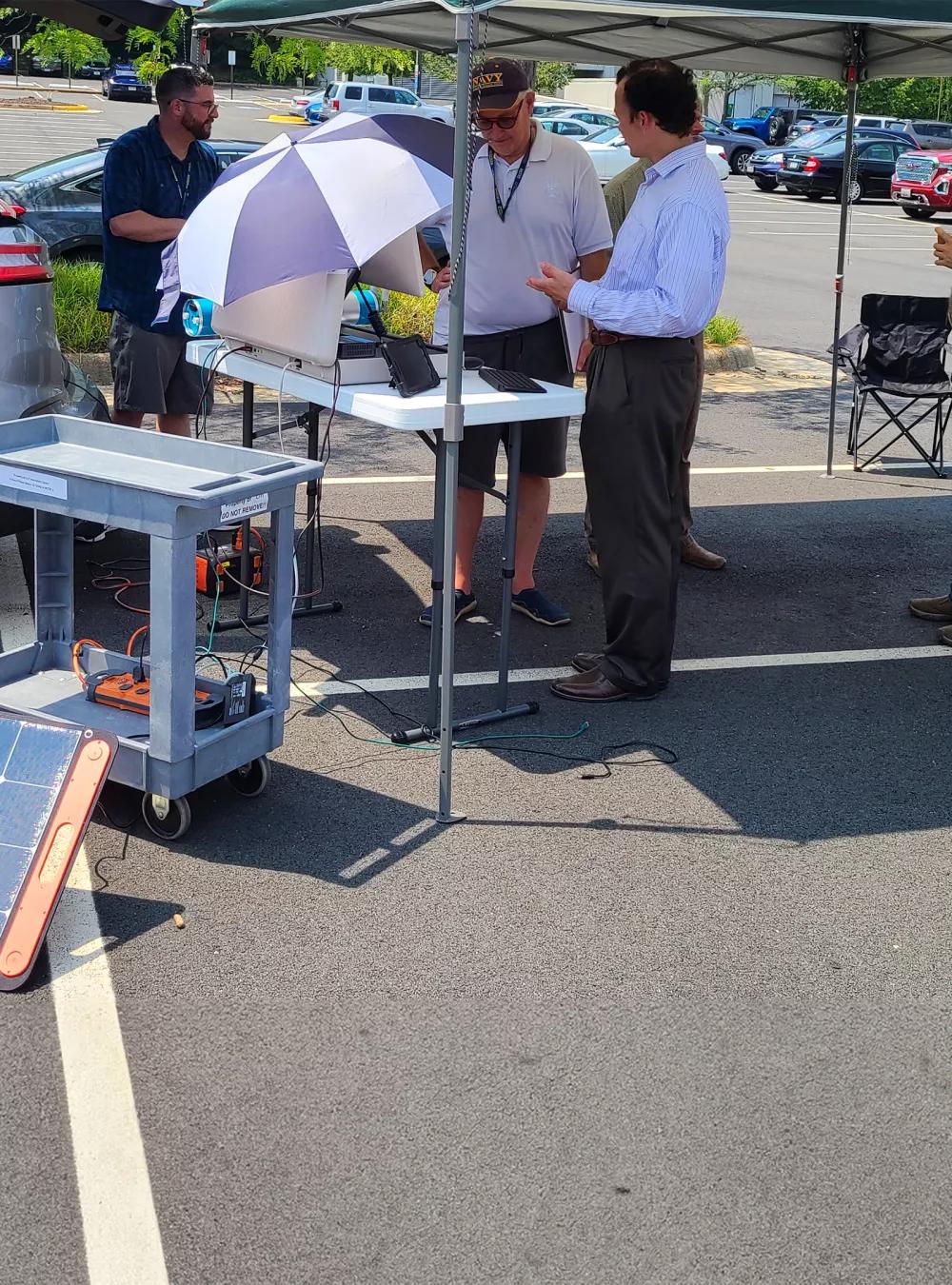Communication is vital, especially in areas without reliable power and internet. A new, MITRE-developed technique brings high-speed internet to a wide area with minimal effort, using commercially available technologies.

From Ukraine to the U.S., StarMesh++ System Is Ready to Connect
When the Russia-Ukraine war began, Russia quickly ravaged Ukraine’s communication system, targeting antennas, jamming frequencies, and destroying facilities.
As part of MITRE’s Quick Ukraine Response Initiative, we combined existing tools and technologies into the Starlink Advantage system, an affordable, portable, secure communications system that could work across the war-torn country.
“This was not about building a single revolutionary new technology,” says MITRE Communications Engineer Joseph Roth. “It was about combining existing, commercially available tools to meet urgent needs.”

Now, Roth and a team of fellow communication engineers have adapted that technology even further, and for a wider range of uses. These include humanitarian assistance, remote access, and military applications.
They demonstrated its capabilities recently at MITRE's campus in McLean, Virginia.
This new system, known as StarMesh++, supports network connectivity for scores of devices across a broad area quickly, easily, and independent of outside infrastructure. Like its predecessor, it focuses on three key aspects: low cost, light weight, and accessible technology.
Fully loaded, this new kit costs less than $20,000 and weighs less than 10 pounds. One person can easily carry it, set it up, and connect it, anywhere in the world. The system’s batteries can last for more than five hours and charge through solar power, allowing work in darkness.
“The capabilities it enables could be revolutionary,” Roth says. “If you want to save lives, people need to communicate. This system lets them do that.”
Born In War, Out of Need
The original Starlink Advantage kits were built explicitly for the Ukrainian Red Cross Society (URCS) aid workers, and nine kits are still actively operating in Ukraine.
It was a tough build. The kits had to be user-friendly for those without technical expertise and incorporate commercially available parts for easy replacement when things broke or were destroyed. The cases had to be lightweight for mobility and durable to survive abuse. The team included solar panels for power and batteries for blackouts. Virtual private networks ensure cybersecurity, and point-to-point radios keep users a safe distance away from the satellite antenna in case it’s targeted by Russian attackers.
Portable printers and scanners also let the URCS transmit vital documents like passports, medical records, and adoption records abroad, keeping records intact despite the devastation.
“When you blow up a country, you destroy their infrastructure, their records, and their ability to communicate,” Roth says. These kits let teams continue to work.
If you want to save lives, people need to communicate. This system lets them do that.
Designing a New System for Connecting Wide Areas
To build on that initial design, Roth added newer satellite antennas and mesh-network technology to create a lighter, smaller, more reliable system that can provide internet connection over a large area. Using just three receivers, the system can cover an area the size of a football field with high-speed data connectivity and support hundreds of devices.
This new system uses flexible solar panels, Starlink communications satellites, and Mesh++-style connectivity networks in a battery-powered case. Mesh-style networks are unique in that they are a group of connectivity devices that can act as a single network. They can also piggyback on existing telecommunications infrastructure, like 4G and 5G cellular connections. This creates an area of connectivity far larger than a single device could generate alone. It also means users can move freely from one antenna to another, without reconnecting each time.
An Easy-to-Build Solution to Operational Challenges
Allowing sponsors to create reliable communications nodes across a large area securely, rapidly, and without relying on any existing physical infrastructure could be a strategic advantage in other applications.
“One of the advantages of working at MITRE,” says Douglas Robbins, vice president, engineering and prototyping, “is that we’re able to take the solutions we create for one area, build on them, and apply those solutions to similar problems across the government.”
Since every device that connects to the network is tracked through the system, the platform can also act as a real-time tracking system for people connected to the network. Meaning, it doesn’t just transmit information to the user. It can also locate the people connected to the network, follow their movements, and help provide a common operational picture to command centers during training exercises, special forces operations, or disaster response.
“This is able to provide benefit to several different groups,” says Robert Durst, the project's chief engineer. “Humanitarian assistance and disaster recovery immediately come to mind, but so does the deployment of network infrastructure to support training exercises and testing, or portable infrastructure and mobile support for rural areas.”
Join our community of innovators, learners, knowledge-sharers, and risk takers. View our Job Openings and Student Programs. Subscribe to our MITRE 360 Newsletter.